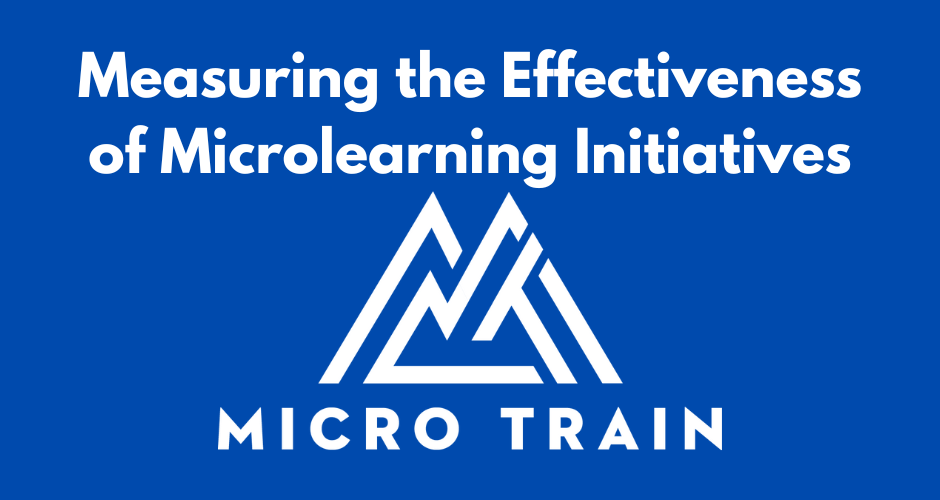Measuring the Effectiveness of Microlearning Initiatives
Measuring the Effectiveness of Microlearning Initiatives
Organizations are looking for ways to keep up with the ever-evolving demands of their workforce. One popular solution is microlearning. A strategy that provides short bursts of information to employees to help them acquire new skills and knowledge quickly. However, measuring the effectiveness of these initiatives can be challenging. Leaving many organizations wondering if they’re making the most of their investment. In this article, we’ll explore the problem of measuring the effectiveness of microlearning initiatives and provide solutions backed by supporting data to help organizations make the most of their microlearning efforts.
Microlearning is becoming increasingly popular as a way to provide employees with the skills and knowledge they need to succeed in their roles. However, measuring the effectiveness of these initiatives can be challenging. Organizations may struggle to determine if the content is resonating with employees, if it’s leading to behavioral change, and if it’s contributing to the overall success of the organization. Without clear metrics and insights, it’s difficult for organizations to assess the value of their microlearning efforts and make informed decisions about future investments.
Four Key Areas:
To measure the effectiveness of microlearning initiatives, organizations need to implement a comprehensive measurement strategy that includes both quantitative and qualitative data. This strategy should focus on four key areas:
Engagement: Tracking how many employees are participating in the microlearning initiatives, how often they’re engaging with the content, and how long they’re spending on each activity.
Learning Outcomes: Measuring how much employees are learning by assessing their retention of information, their ability to apply the knowledge to their job, and their ability to make decisions based on the information provided.
Behavioral Change: Tracking whether employees are applying the information they’ve learned on the job and how their behavior is changing as a result.
Business Impact: Measuring the overall impact of microlearning initiatives on the organization, including increased productivity, improved employee performance, and the achievement of business goals.
Difficulty In Measuring
A study by Brandon Hall Group found that 53% of organizations have difficulty measuring the effectiveness of their microlearning initiatives. However, organizations that do measure the effectiveness of their microlearning efforts see significant benefits. According to a survey by LinkedIn Learning, companies that measure the impact of their microlearning initiatives are 50% more likely to see increased employee engagement. 40% more likely to see improved employee productivity.
Additionally, the same LinkedIn Learning survey found that the most effective way to measure the impact of microlearning is through a combination of quantitative and qualitative data. This includes analyzing engagement metrics, surveying employees about their experience with the content, and tracking changes in behavior and performance.
To make the most of microlearning initiatives. Organizations must invest in a comprehensive measurement strategy that tracks engagement, learning outcomes, behavioral change, and business impact. By using a combination of quantitative and qualitative data, organizations can gain valuable insights. Into the effectiveness of their microlearning initiatives and make data-driven decisions about future investments. With a focus on measurement, organizations can ensure that their microlearning efforts are delivering real value.
References
A Dynamic Approach to Teaching People New Skills
Read More about Culture
Let Micro-Train Build Your Next Course
Because of. And then. Due to. Because of. And then. Due to. Because of. And then. Due to. Because of. Due to. And then.








